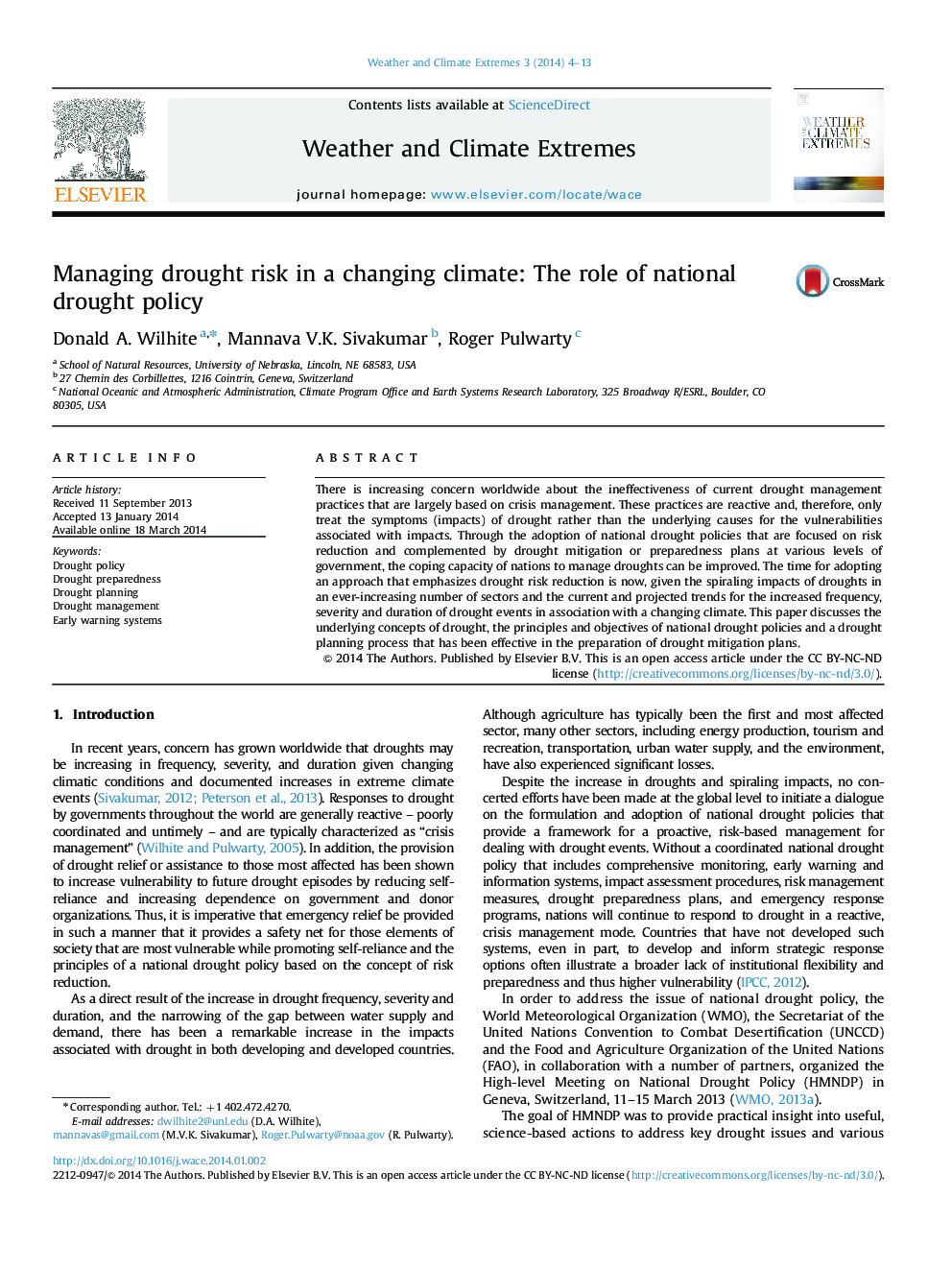| Article ID | Journal | Published Year | Pages | File Type |
|---|---|---|---|---|
| 1066678 | Weather and Climate Extremes | 2014 | 10 Pages |
There is increasing concern worldwide about the ineffectiveness of current drought management practices that are largely based on crisis management. These practices are reactive and, therefore, only treat the symptoms (impacts) of drought rather than the underlying causes for the vulnerabilities associated with impacts. Through the adoption of national drought policies that are focused on risk reduction and complemented by drought mitigation or preparedness plans at various levels of government, the coping capacity of nations to manage droughts can be improved. The time for adopting an approach that emphasizes drought risk reduction is now, given the spiraling impacts of droughts in an ever-increasing number of sectors and the current and projected trends for the increased frequency, severity and duration of drought events in association with a changing climate. This paper discusses the underlying concepts of drought, the principles and objectives of national drought policies and a drought planning process that has been effective in the preparation of drought mitigation plans.
